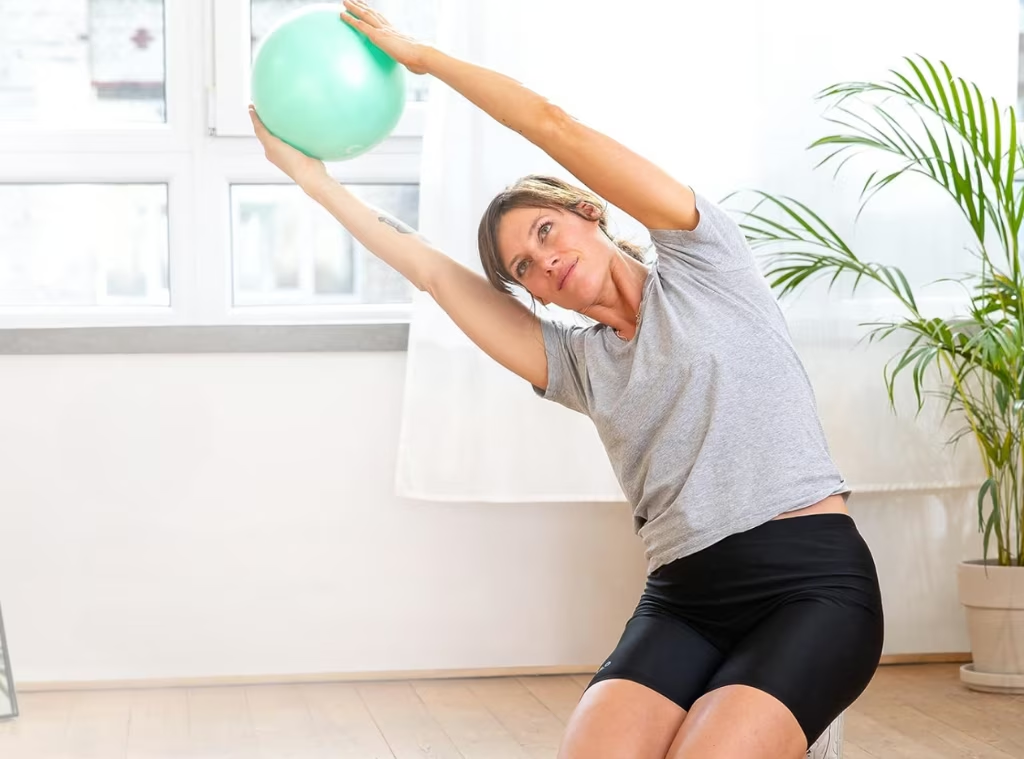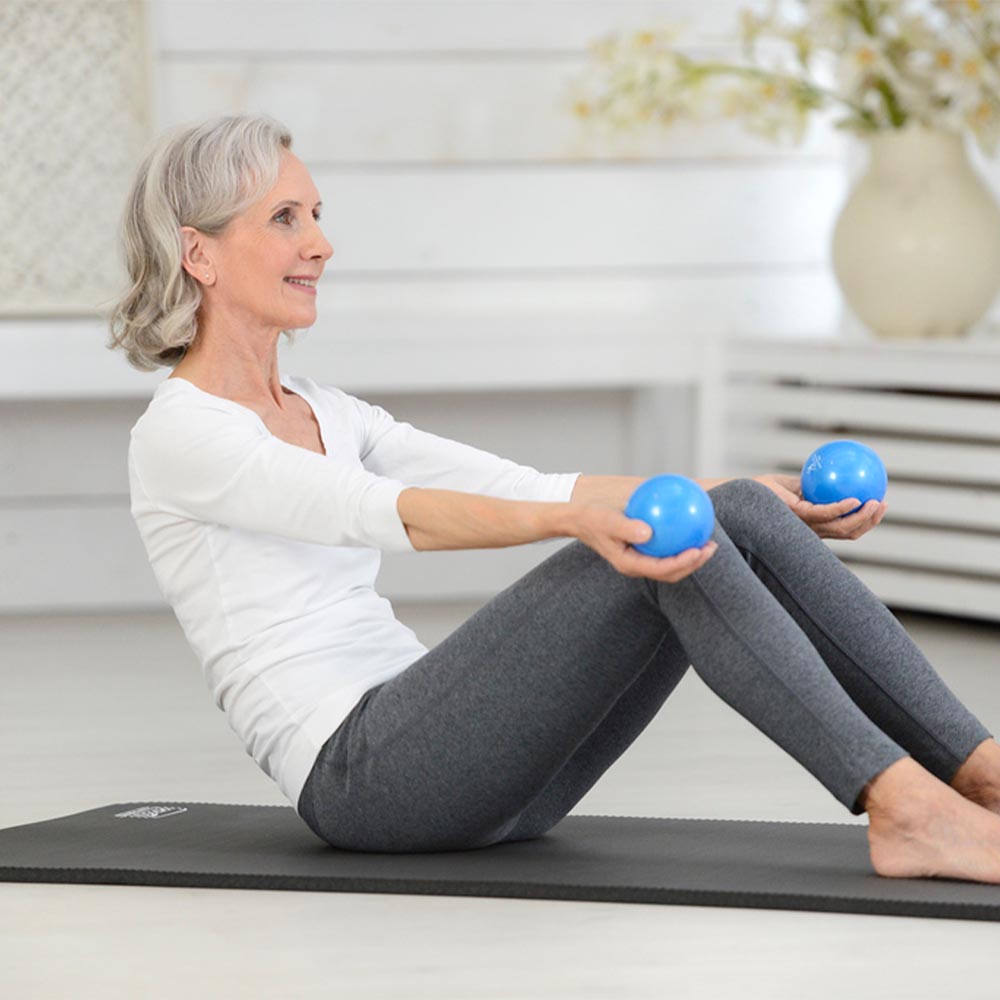Pilates Soft Ball Exercises for Better Balance and Stability
Pilates has gained immense popularity over the years for its ability to improve strength, flexibility, and overall well-being. Among the various tools used in Pilates, the soft ball stands out as a versatile and effective tool for enhancing balance and stability. In this article, we will explore the benefits of Pilates soft ball exercises and how they can transform your fitness journey.
Understanding the Benefits of Pilates Soft Ball Exercises
Pilates soft ball exercises are specifically designed to engage your core muscles while promoting stability and balance. The soft ball adds an element of instability, which forces your body to work harder to maintain control throughout various movements. This unique aspect of the soft ball not only challenges your muscles but also encourages a deeper connection between your mind and body, which is a fundamental principle of Pilates.
One of the key benefits of using a soft ball in Pilates is the enhancement of proprioception. Proprioception is your body’s ability to sense its position in space, which is crucial for maintaining balance. By incorporating soft ball exercises into your routine, you can improve this important skill, making you more stable in everyday activities. This heightened awareness can be particularly beneficial for athletes or individuals recovering from injury, as it allows for a more mindful approach to movement and can aid in the prevention of future injuries.
Furthermore, the soft ball can help alleviate tension and stress in your muscles. As you perform the exercises, the gentle pressure provided by the ball can release tightness and promote relaxation. This not only benefits your physical body but also contributes to your mental well-being. The rhythmic nature of Pilates, combined with the soothing presence of the soft ball, creates a meditative experience that can help reduce anxiety and improve overall mood, making it an excellent addition to any wellness routine.
Additionally, integrating soft ball exercises into your routine can offer a challenging yet enjoyable approach to fitness. The softness and lightweight nature of the ball allow for varied movements, keeping your workout sessions fresh and engaging. Whether you are new to Pilates or an experienced practitioner, there are exercises to suit every level. The versatility of the soft ball means that you can easily modify exercises to match your skill level, making it a perfect tool for group classes where participants have varying degrees of experience.
Enhancing Core Strength
Core strength is a vital component of balance and stability. Many Pilates soft ball exercises specifically target the abdominal muscles, helping to build strength and endurance. A strong core supports your spine and pelvis, enabling better posture and providing stability during movements. This foundational strength is essential not only for athletic performance but also for everyday tasks such as lifting, bending, and even sitting for extended periods.
Incorporating a soft ball into your core workouts adds an element of challenge. For instance, when performing traditional exercises like crunches or planks, placing the ball under your lower back can intensify the workout. You’ll find that your core engages more deeply as it works to stabilize your body, delivering better results over time. Moreover, the instability created by the ball encourages the recruitment of smaller stabilizing muscles that are often overlooked in traditional strength training, leading to a more comprehensive workout.
As you strengthen your core, you’ll find improvements not just in your Pilates practice, but in other activities too! Improved core strength translates to enhanced performance in sports, daily tasks, and any movement requiring balance and coordination. This newfound strength can enhance your ability to participate in activities like running, dancing, or even playing with your children, allowing you to enjoy life with greater freedom and confidence.

Improving Flexibility and Range of Motion
Flexibility is another critical aspect of balance and stability. Pilates soft ball exercises can enhance your flexibility by promoting a fuller range of motion in your joints. The ball encourages various stretches, and using it as a support can assist in reaching those more challenging positions. This is particularly beneficial for individuals who may have tight muscles due to sedentary lifestyles or repetitive movements in their daily routines.
For example, while performing stretches like the seated forward bend, placing the soft ball between your legs can help you reach deeper into the stretch. It provides gentle resistance that encourages your body to open up more effectively while also offering stability, making the exercise safer and more profound. Additionally, the soft ball can be used to target specific muscle groups, such as the hip flexors or hamstrings, allowing for a more tailored approach to flexibility training. Click here to get about: Pilates Chair Australia: How to Choose the Best One for Your Home.
Regular practice of these exercises will not only enhance your overall flexibility but will also contribute to injury prevention. As your body becomes more accustomed to these movements, achy tightness should diminish, leaving you feeling more agile and able to move with ease. This improved flexibility can also enhance your performance in other physical activities, as your body becomes more adaptable and responsive to various demands placed upon it.
Incorporating Pilates Soft Ball Exercises into Your Routine
Now that you understand the benefits of these exercises, you might be wondering how to start integrating them into your routine. The good news is that you don’t need to overhaul your entire workout to accommodate the soft ball; you can simply add a few targeted exercises to your existing regimen.
To begin, assess your current fitness level and set realistic goals. If you’re new to Pilates or haven’t worked with a soft ball before, consider consulting with an instructor who can guide you through proper techniques and movement patterns. Look for classes that focus on Pilates with props or explore online tutorials that feature soft ball exercises. Many fitness studios offer introductory workshops that can provide you with the foundational knowledge necessary to use the soft ball effectively, ensuring you avoid common pitfalls and maximize your workout.
When developing your workout, aim for a balance between strength, flexibility, and stability exercises. Incorporate exercises targeting different muscle groups: work on your core, legs, and arms while mixing in flexibility stretches. Keep each session enjoyable by changing your exercises regularly, ensuring that your body remains challenged and engaged. Additionally, consider tracking your progress in a fitness journal; noting improvements in strength, flexibility, and overall well-being can be incredibly motivating and help you stay committed to your routine.

Sample Pilates Soft Ball Exercises
Here’s a brief overview of some effective Pilates soft ball exercises to get you started:
- Ball Squeeze: Sitting on the floor, place the soft ball between your knees. Squeeze the ball as you contract your inner thighs and hold for a few seconds before releasing. This exercise builds inner thigh and core strength.
- Ball Rollouts: Start on your hands and knees with the ball placed under your hips. Roll the ball forward while extending your arms and legs, then return to the starting position. This movement challenges your core stability and strength.
- Seated Twists: Sitting on the floor with your knees bent, hold the ball between your hands at chest level. Twist your torso to the right and then to the left while engaging your core. This helps with spinal mobility and core engagement.
In addition to these foundational exercises, consider incorporating variations to keep your routine fresh and exciting. For instance, the Ball Pass is a dynamic exercise where you lie on your back, hold the ball between your feet, and lift your legs and arms simultaneously to pass the ball from your feet to your hands. This not only enhances core strength but also improves coordination and control. Another engaging option is the Wall Sit with Ball, where you place the ball between your lower back and the wall, maintaining a seated position while engaging your core. This variation intensifies the traditional wall sit and adds an element of instability, further challenging your muscles.
Conclusion
Incorporating Pilates soft ball exercises into your fitness routine can significantly improve your balance, stability, and overall body awareness. As you progress, pay attention to how your body feels and moves, adjusting your practice as necessary.
The journey towards better balance and stability is an exciting one, filled with opportunities for growth. So grab your soft ball, get moving, and embrace the wonderful benefits these exercises bring to your life!
